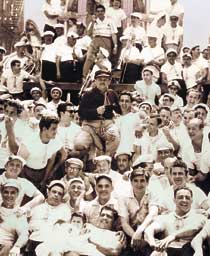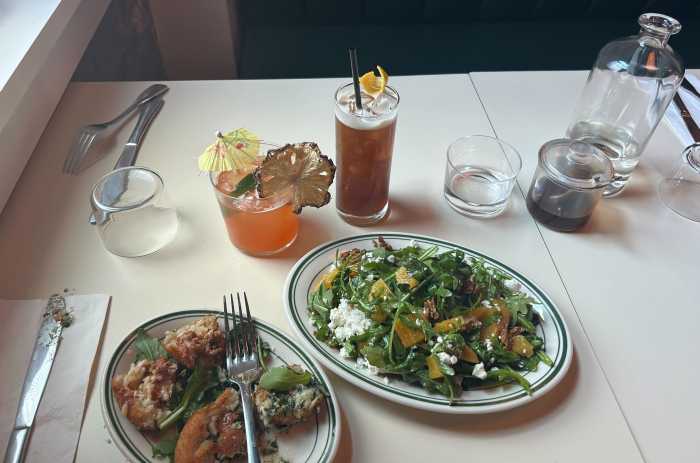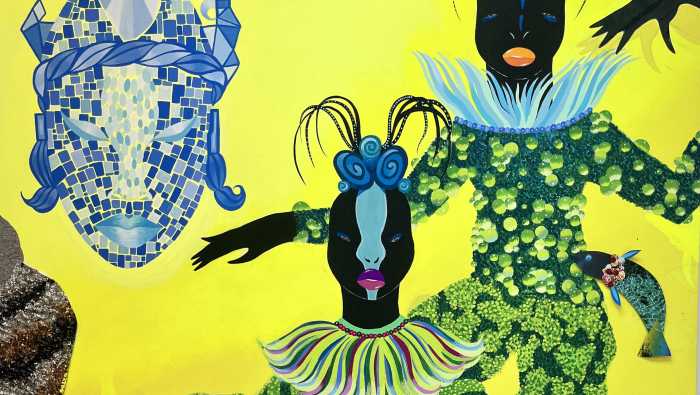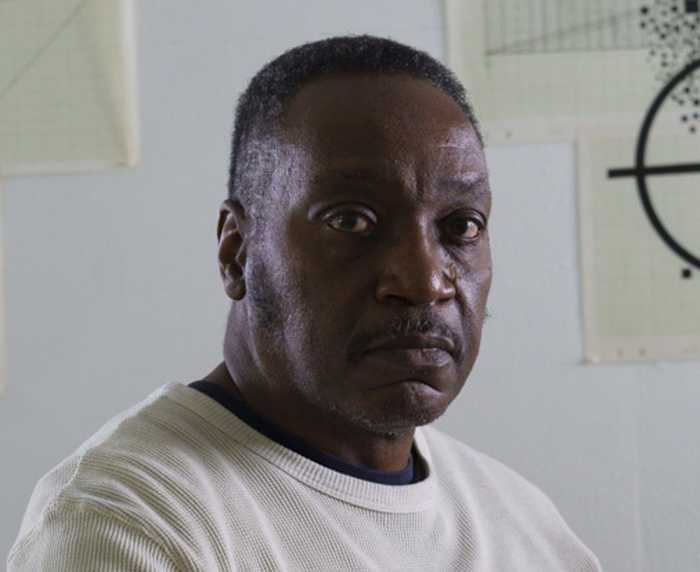Bay Ridge filmmaker Tony De Nonno’s latest
documentary relates an annual feat of daring and faith so incredible,
you wouldn’t believe it if you didn’t see it with your own eyes.
"Heaven Touches Brooklyn in July"
recounts the history of the annual summer dance of the Giglio
through heartfelt interviews with Williamsburg men whose families
have taken part in the event for generations. Certainly, the
documentary makes you long for a cloudless blue sky, to see these
men – 125 at a time – hoist aloft the Giglio, a decorative monument
to their faith, folk art and families.
The five-story Giglio spire is adorned
by local artisans with religious icons and decorative touches
sculpted in bas-relief out of papier-mache, and illuminated with
a colorful palette of paints.
De Nonno, a self-described "spokesman
for the Italian-American community," told GO Brooklyn that
it was important to him to document "positive images of
Italian-Americans" as opposed to the stereotypical "chauvinist,"
gangster image pervasive in TV and movies.
He said that while Brooklynites readily
associate the Hasidim with Williamsburg, many don’t know of the
tight-knit Italian-American community that also resides there.
The result is a documentary brimming with
archival footage, interviews, and narration by actors John Turturro
("O Brother Where Art Thou") and Michael Badalucco
(ABC’s "The Practice").
"Both have been to the Feast of San
Paolino, on a number of occasions," said De Nonno. The Feast
of San Paolino d’Nola, a 12-day Roman Catholic celebration, originated
in Nola, Italy. The feast, which includes the Herculean dance
of the Giglio (pronounced JEEL-yo), is an ancient tradition that
came to America with immigrants who arrived at the end of the
19th century.
Every year, under the hot July sun, the
men of the Williamsburg Italian-American community come together
to lift the five-ton handmade tower-like spire onto their shoulders
and parade it through the streets.
The documentary is almost better than being
at the festival – as the camera gets close to the lifters’ faces.
The lifters, or "paranzas," strain to raise the structure,
blowing air into their cheeks. Their faces are red and sweaty,
and their hands grasp for other lifters’ hands and often middle-aged
bellies in their efforts to hold the spire aloft.
Some of the men speak of getting "an
adrenaline rush" after the first lift – a result of the
pressure to succeed in front of hundreds of spectators? Or is
it, in fact, the effect of religious ecstasy? Some of the men
waited their whole childhood to be "paranzas" after
watching their fathers and grandfathers perform the feat.
The "capo paranza," or head lifter,
maps out the lifts along the Giglio route – how long, when and
where the men need to lift – an important task, as there are
five stories of danger swaying over their heads. The "capo"
directs the lifters and the brass band like an orchestra leader.
The lifters do their work to the strains of Italian military-style
marches played by the band – which, by the way, is also held
aloft on their shoulders.
This lifting of the Giglio structure is
"a sacred act of devotion and penance," some of the
men believe, adhering to the code that says "the more pain
– the greater the blessing."
The festival can be traced back 1,600 years
in Nola. According to De Nonno, in the fourth century, the town
of Nola was overrun by a North African band of warriors who kidnapped
Nola’s young men and brought them home as slaves. San Paolino,
then the bishop of Nola, gained fame when he liberated Nola’s
men from a North African sultan. When he returned with the men,
the townspeople brought him lilies – the inspiration for the
design of the Giglio, or "lily."
In Williamsburg, the 12-day feast incorporates
donations of blessed bread to the community ("La Questua"),
a children’s Giglio dance, and a day in honor of the Virgin Mary,
but the most awe-inspiring days are when the lifters dance the
Giglio through the streets.
Interestingly, the evolution of the Feast
of San Paolino involves the Brooklyn-Queens Expressway. According
to DeNonno’s documentary, when the Our Lady of Mt. Carmel shrine
was razed to make room for the BQE in the 1950s, a new shrine,
church and school were erected at Havemeyer and North Eighth
streets. It was then that the celebrations in honor of the Virgin
Mary and Saint Paolino were combined, and today the Williamsburg
festival is tied to the Our Lady of Mt. Carmel R.C. Church and
its pastor, Monsignor David Cassato, a San Paolino feast spokesman.
De Nonno captures Cassato at the pulpit
reminding his flock to remember the event’s significance – the
importance of community, faith and family.
It takes 125 men at a time to carry both
the Giglio and the 15-piece brass band on their shoulders. De
Nonno includes a trumpet solo and interviews with the composers
and musicians in the documentary as well.
De Nonno interviews Italian-Americans from
ages 5 to 95 about their devotion to the festival. There is a
bank vice president and an editor of an Italian-American encyclopedia
among many others, but they have other titles like "lifter,"
or "third-generation lifter" or "capo paranza."
De Nonno also reveals the painstaking process
behind putting together the structure through interviews with
the builders and artisans. Men like James "Jimmy Dell"
Dellocono, a master builder, explain how the giant towers are
wrought from wood and papier-mache. The forms are built with
newspaper and paste, and then painted. The structures incorporate
the expertise of painters, sculptors, architects and carpenters.
The program masterfully cuts back and forth
between American Giglio festivals and those in Nola, where contemporary
Giglio artisans trace their lineage back over hundreds of years.
The footage of the Italian festival – where not one but eight
Giglios are hoisted and danced across the palazzo – is spectacular.
Though De Nonno is obviously a fan of the
feast and its importance to the community, he also points out
that women have been excluded from lifting the Brooklyn Giglio,
though their sisters in Nola have lifted, albeit in "ceremonial
lifts."
"In Brooklyn the question still seems
doubtful if women lifters will ever be allowed to partake in
this glorious festival as lifters," Badalucco narrates.
"But since the Brooklyn structure is made up of unpliable,
unforgiving solid metal beams with pointed corners that dig in
the shoulder, the question is whether the women would ever want
to lift this towering structure." (The beams in other Giglio
structures, in Queens and other tri-state feasts, are made of
wood.)
De Nonno said that while compiling footage
for his documentary, he witnessed little girls "sneaking"
under the children’s Giglio, disguising their long hair under
hats so they could participate. In 1999, the girls were officially
asked for the first time to participate in the Brooklyn children’s
Giglio dance.
The oral histories of the families who
may have only had a "capo paranza" baton or black-and-white
photo to remind them of their ancestors’ devotion to the church,
their saint and their community, have lovingly been documented
by De Nonno.
"I was destined to tell this centuries-old
story," said De Nonno. "It may be about this ritual
in Brooklyn, but in a lot of ways it’s about the soul of Italian-Americans."
"Heaven Touches Brooklyn in July"
premieres Saturday, March 10 at 8 pm on PBS’ WLIW Channel 21.
Both actor John Turturro and filmmaker Tony De Nonno are scheduled
to be live in the WLIW studio for the premiere.

























